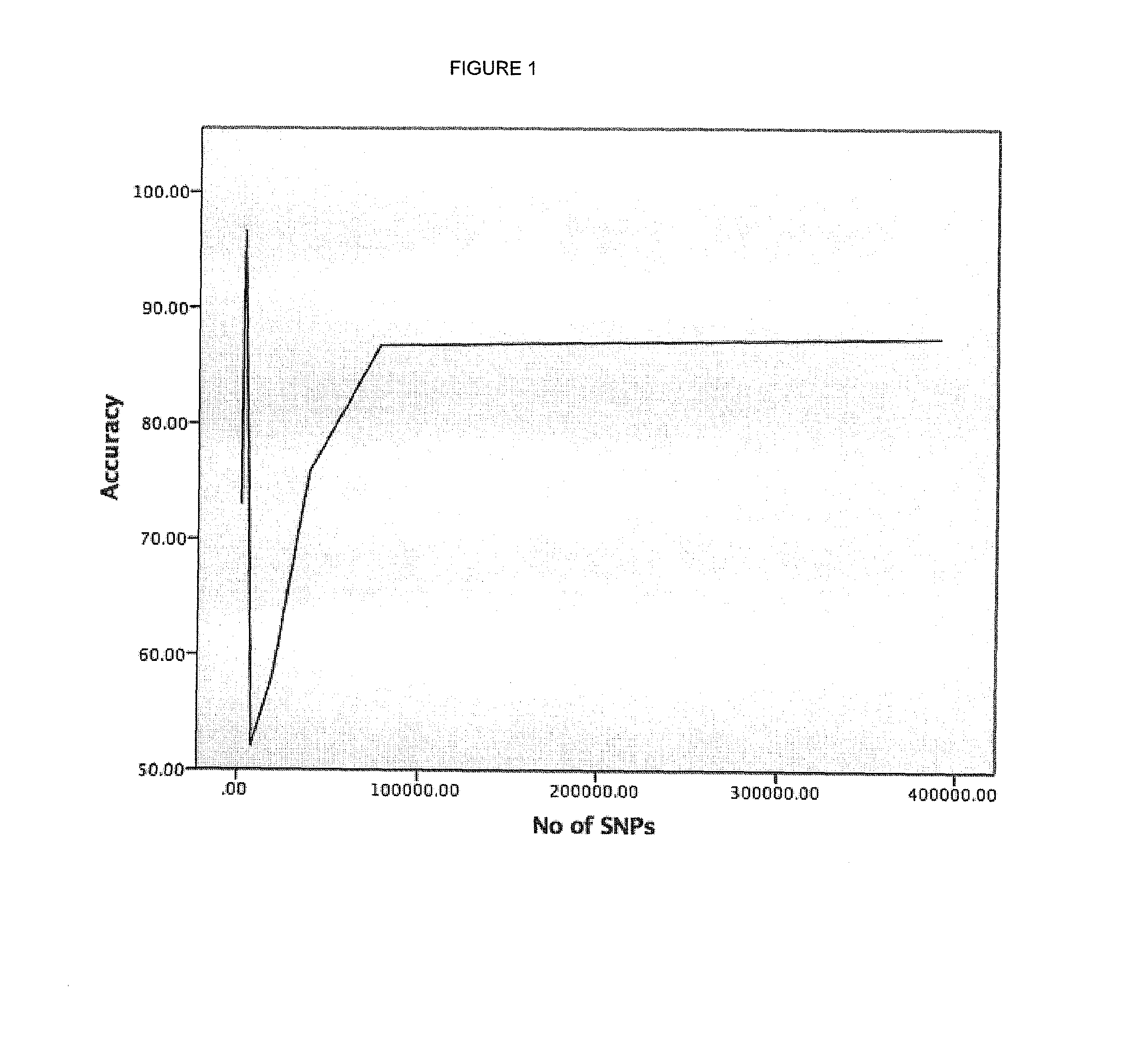Method of diagnosing autism spectrum disorder
- Summary
- Abstract
- Description
- Claims
- Application Information
AI Technical Summary
Benefits of technology
Problems solved by technology
Method used
Image
Examples
example 1
SVM Analysis of SNPs in Sample Comprising ASD Affected and Unaffected Individuals
[0110]Analysis of all individuals in the AGRE sample (see Materials and Methods), ‘Affected’ and ‘Unaffected’, using the ‘leave one out’ method, resulted in an overall accuracy of 87.6%, i.e. the algorithm predicted the correct diagnostic class for 87.6% of the total sample. The percentage accuracy was higher in affected individuals than in unaffected individuals (Table 1).
TABLE 1Overall classification of all AGRE samples.Total Sample (n)Predicted (n)Accuracy (%)ASD Affected1385126491.3Unaffected1494125383.9Total2879251787.6Total sample: the total number of individuals in each diagnostic class.Predicted: the total number correctly predicted by the SVM algorithm.Accuracy: the total percentage accuracy achieved.
[0111]Using the following formulas, both specificity and sensitivity were measured:
Specificity: True Negatives / True Negatives+False Positives=84%
Sensitivity: True Positives / True Positives+True Nega...
example 2
Analysis with a Reduced Number of “Influential” SNPs
[0114]The whole genome sample described in Example 1 used a total of 390671 SNPs to achieve an overall accuracy of 87.6%. Subsequent analysis involved identifying, from the initial analysis, which were most influential to the classification, and repeating the analysis with a reduced number of “influential” (i.e. more highly weighted) SNPs.
[0115]The results are shown in FIG. 1 and Table 2.
TABLE 2No of SNPsAccuracy %39067187.437813486.733906775.821953458.18781352.07390789.09312696.67234589.00156473.00
[0116]As shown in FIG. 1 and Table 2, maximal accuracy of over 96.6% is achieved with a SNP set of about 3126 of the most highly weighted SNPs from the whole genome sample. These SNPs, together with their respective weights, are shown in Table 3.
[0117]Increasing or decreasing the number of SNPs lowers the accuracy of the test, but SNP sets containing between 2345 and 3907 SNPs still result in an accuracy of at least 89%.
Materials and Met...
PUM
| Property | Measurement | Unit |
|---|---|---|
| Fraction | aaaaa | aaaaa |
Abstract
Description
Claims
Application Information
 Login to View More
Login to View More - R&D
- Intellectual Property
- Life Sciences
- Materials
- Tech Scout
- Unparalleled Data Quality
- Higher Quality Content
- 60% Fewer Hallucinations
Browse by: Latest US Patents, China's latest patents, Technical Efficacy Thesaurus, Application Domain, Technology Topic, Popular Technical Reports.
© 2025 PatSnap. All rights reserved.Legal|Privacy policy|Modern Slavery Act Transparency Statement|Sitemap|About US| Contact US: help@patsnap.com

